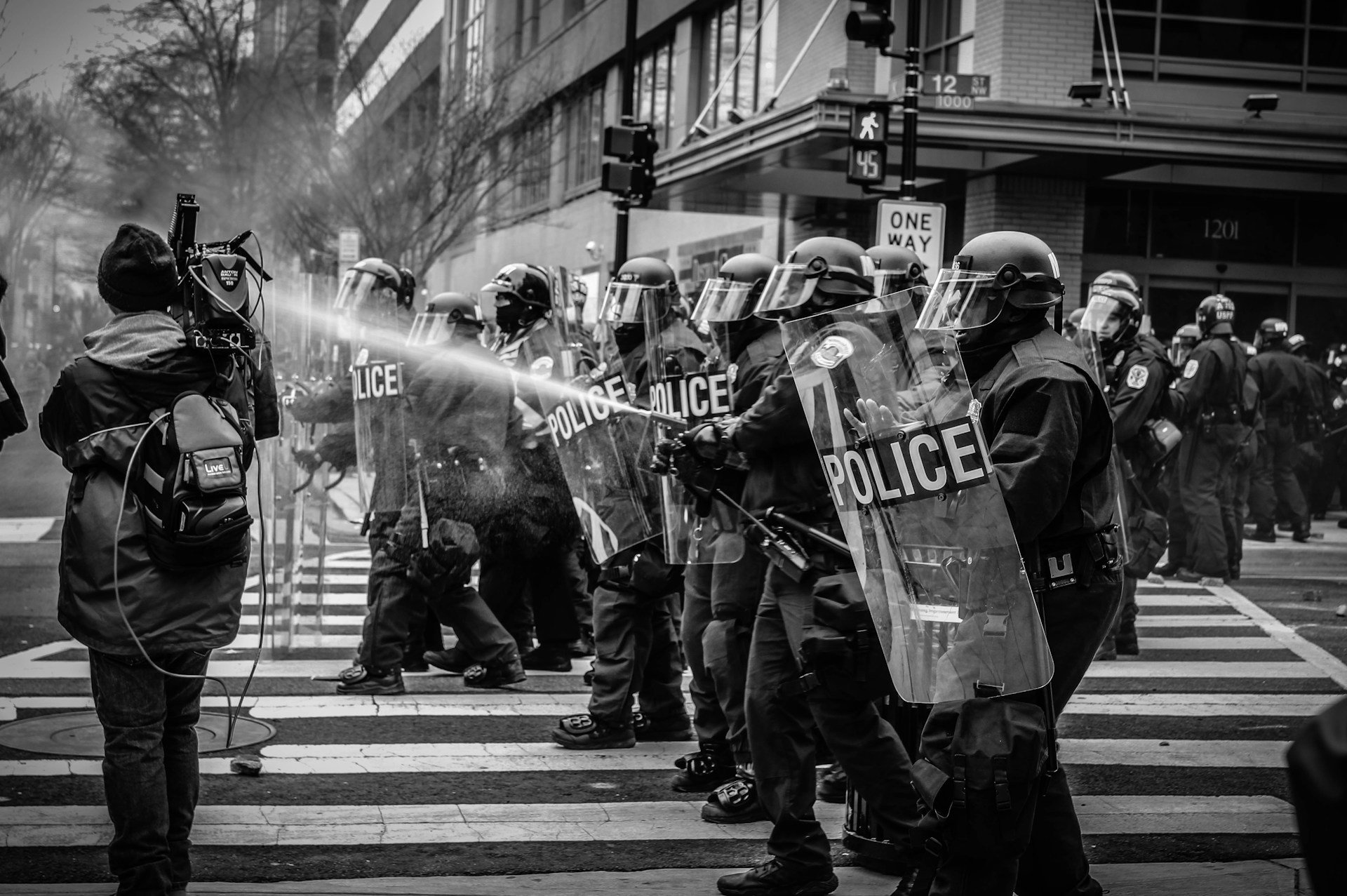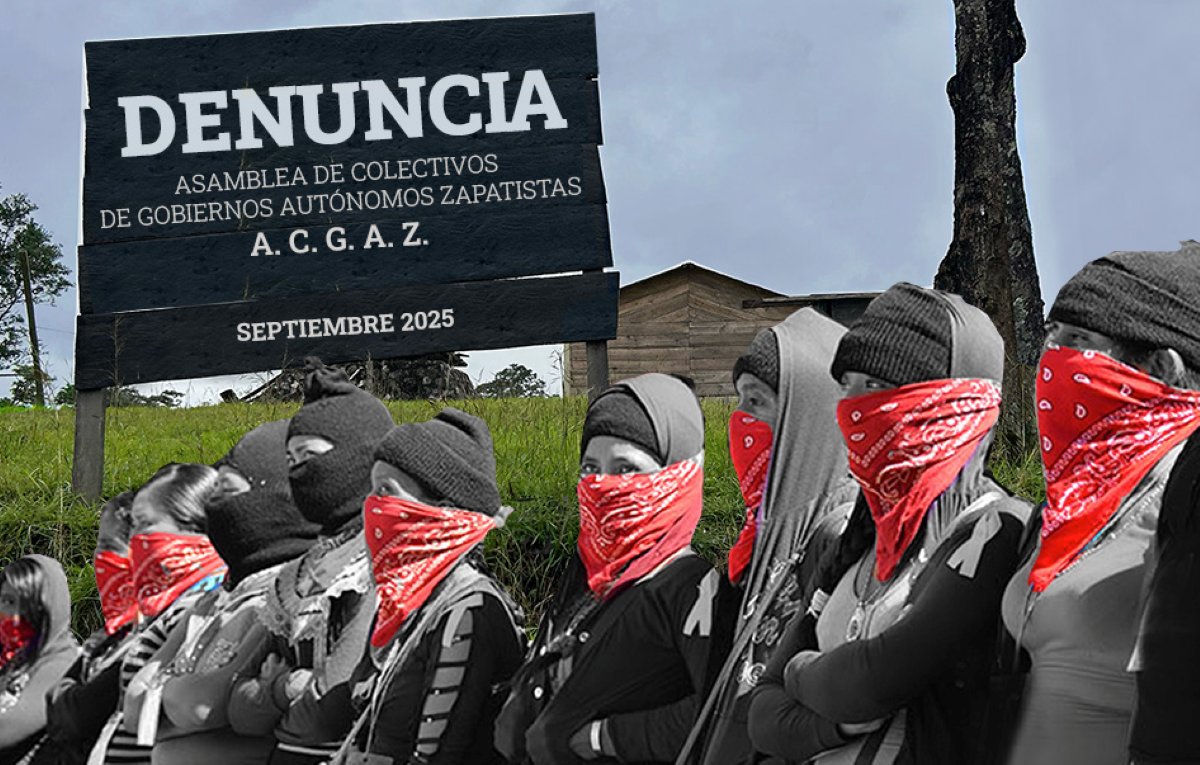Filed under: Analysis, Community Organizing, Mexico, Southern Mexico

The following text by Leonardo Toledo, translated by Scott Campbell, takes a critical look at various autonomous processes in so-called Chiapas, Mexico. The original Spanish-language article is accompanied by a photo essay by Isaac Guzmán.
What do we imagine when we say “autonomy”? There are many disparate possible scenes. From an official invoicing a table dance in the name of his autonomous organization to a community self-defense member ambushed by police, soldiers, narcos, and former self-defense members.
Another image of autonomy could be the man with three positions in autonomous institutions who telephones his best friend to make fun of the way a group of Indigenous people speak, but it can also be an Indigenous community meeting in assembly, deciding upon their next local government together.
Perhaps we imagine a prosecutor who, instead of solving pressing cases for society, dedicates his time to litigating against his own family and fighting for a prestigious state scholarship. Or perhaps an entire community that, after a thousand fiascos, decides to expel political parties from local government.
My favorite imaginary image of autonomy is that of a man who, from a cubicle in an autonomous university (which would collapse without public funding), writes an article arguing that autonomy for the people is only possible if they refuse to accept public funding.
Autonomy can be many things. Philosophers will tell us that its existence depends on the “categorical imperative,” sociology will unthinkingly turn to “agreement in assembly,” some lawyers will probably lecture us about the indivisibility of territorial sovereignty and the concurrence of the law, while anthropology will offer to walk with us to reflect together on justice and dignity. How, then, does one look at and live autonomy?
Let’s look at the autonomous experience of the peoples of Chiapas.
Customs and traditions?
As an initial compromise, we must accept that there are many ways of practicing it, as by definition it is impossible for there to be ONE autonomy. But we can reach a basic agreement on the definition of autonomy applied to peoples: their capacity to rule themselves based on their own norms and governing bodies in their territories (be they municipalities, states, or communities).
Autonomy is, thus, to govern oneself, to make decisions for oneself instead of simply accepting the decisions of others. So it is between individuals as between communities as between regions and freelancers.
But the construction of peoples’ autonomies has gone through many ups and downs, many forms, and many names. To not dive too deep, we can distinguish between those normative systems that dialog and negotiate with the State and those that do not (or almost do not).
In the de-indigenized urban world, we label as “customs and traditions” any form of government that we don’t understand and don’t care to understand. Although it is only applied to Indigenous peoples. Many don’t understand European forms of government either, but we don’t call those “customs and traditions.”
The normative systems of the peoples exist in a continual metamorphosis that negotiate with power and governments. In the Viceroyalty they had one way, after Independence another, after the Reform another, in the post-Revolution another, and so on. It is never the same, but it is always their own.
The MAREZ and ephemerality
However, the most recent version of autonomy in the communities of Chiapas is (perhaps) the first to name itself as such, to be called as such by those who practice it. Its concrete manifestation was the Rebel Zapatista Autonomous Municipalities (MAREZ).
Grouped together in the Good Government Councils (JBG), the MAREZ issued their own norms and ratified laws enacted by the Clandestine Revolutionary Indigenous Committee (CCRI, aka the EZLN command).
This generation of norms and agreements (a sine qua non condition of autonomy) had a peculiar condition of ephemerality, as in the absence of jurisprudence, every JBG issued new ones and de facto repealed the previous ones. Every year, autonomy was restarted, like an autoimmune condition.
All this autonomy that was built and rebuilt on a permanent basis disappeared with the November 5, 2023, decree that announced the disappearance of the MAREZ and the JGB, along with declaring as invalid all related positions and documents, that is, all the established norms.
(This same decree announces the creation of new forms of government, the Autonomous Regional Governments, of which is there little territorial or regulatory information.)
Oxchuc and political parties
Parallel to Zapatista autonomy there exist other forms of peoples’ autonomy. Traditional governments remain (more or less in synchrony with municipal governments). But without a budget and without participating in decision making, they are largely symbolic.
New forms of self-government have also emerged, such as the case of Oxchuc, where after numerous proceedings and “verifications,” in 2018, they were able to select their authorities in accordance with their own normative system as recognized by the Chiapas Institute of Elections and Citizen Participation (IEPC).
But upon being excluded from the process, political parties united to derail the process, alongside (but not mixed with) Zapatista sympathizers who viewed this “legal” autonomy as a threat to their own autonomous processes.
Autonomy in Oxchuc ended up destroying itself by gunfire in 2021.
New forms of government
Other experiences of self-government have occurred in Altamirano and in Pantheló, after electoral processes were rigged and manipulated to keep in local power groups whose main interest was plundering and whose only method of convincing was threats and murder.
In both cases (and in Oxchuc after 2021) the one-person mayorships have de facto disappeared to make way for Municipal Councils (that are not necessarily de jure).
With stumbles and ups and downs, new forms of government are being built.
These are the other autonomies that don’t appear on the TV, nor do they have guns, nor are they grouped around acronyms, but they decide on norms that regulate their coexistence and their relationship with neighboring communities and with the government. They are many, insignificant perhaps to nearly everyone, except for themselves.
These are the groups of residents who impede the growth of ecocidal urban development, who hang banners with “Thief: If we catch you, we lynch you,” those who collect funds to build retaining walls, those who agree on one day a month to clean the green area…
They are also the communities who put stones in the road to block the passage of viruses (as effective as the actions of “legal” mayors who do so with the same intention). Everything is built based on agreement that derives from the norms of collective well-being.
The San Andrés Accords
But without doubt the greatest autonomous experience we’ve had was the process of dialogs in San Andrés. A never before assembled group of scholars and representatives of the peoples raised two fundamental issues: who we are and what we need.
This process of reaching agreement was negotiated with representatives of the legislative and executive branches, which resulted in the San Andrés Accords and the Law of Indigenous Rights and Culture. Laws of their own with the backing of the State.
A historic moment that would have transformed not just the relationship of the peoples with the State, but also their living conditions and their full and dignified participation in decision making, was betrayed first by the timorous Ernesto Zedillo and then by Vicente Fox.
That great exercise in autonomy that occurred in San Andrés Sacamchen was partially rejected by the executive and legislature, both during the Zedillo and Fox administrations. The following administrations also did little to comply with the agreements.
The peoples of Oaxaca, however, took advantage of the loopholes in the reform to legislate at the local level and to create municipalities ruled by Indigenous “customs and traditions.” Today, more than 400 municipalities choose their authorities according to their own normative systems.
In Chiapas, the Zapatista communities opted for rebel autonomy, without recognition by the State (without a budget or anything else). The local legislature, without consulting the peoples, approved a limited and unimplemented reform. Until Oxchuc tried it.
Restoring dignity
The current construction of autonomy bypasses everything that is theorized about it. To name oneself is no longer “this is who we are,” but rather an affirmation of difference without building agreements with those who are different.
In these times, governing oneself results in rejecting by force the previous form of government or that of one’s immediate neighbors. The issuing of one’s own norms (not always, but sometimes) is often a mechanism of impunity and unaccountability and (again, not always) without prior consultation.
This autonomy based on rifles has as its foundation many years of grievances and exploitation. In all the communities where the people have risen up in arms, they have risen up over the bodies of their loved ones, hidden behind the mantle of impunity and State omission.
If prefixes were movies, the “AUTO” of this armed AUTOnomy would not have happened without the “IN” [or UN] prequels. This nomos of the jungle arose as a response to the UNgovernability, the INeptitude, the UNenforcement, the INcapacity, the INjustice…including the off-brand spinoff called INdigenism.
In every one of the photos by Isaac Guzmán that co-create this text we could spend a long time elaborating a semiotics of grievance. The story each photo tells should not be read without also knowing the previous story, the prequels of these sequels.
Discussing the categorical imperative becomes banal when the norm is dictated by rifles. The “we are good and they are bad” leaves no room for moral metaphysics. Restoring human dignity comes in last in the face of a desire for revenge.
But “autonomy is to govern oneself,” we keep repeating to ourselves.
The entry arch to the community of Tila welcomes you. Depending on which side you live (plus or minus 20 meters), you will be governed by different norms. This arch marks the beginning and end of itself, of equals who ceased to be equals.
“Autonomy is to govern oneself,” we repeat to ourselves.
Tila and the dissolution of the other
The inhabitants of the community of Tila want to stop being a part of Ejido Tila. The inhabitants of Ejido Tila want the lands of the community of Tila to return to the ejido to which they belong.
Each group governing itself.
What adjective should we add to autonomy when the government that emanates from it includes only a few of us?
Can it be called autonomy if your existence as a group or individual is conditioned on submissive obedience to the norms of another? Is there autonomy without agreement?
When the autonomy of some is the heteronomy of others who share the same territory, the only possibility that seems to remain is the dissolution of the other, the only agreement possible is submission, the loss of moral freedom (as Castoriadis would say).
In that same Tila, in addition to the “official” self-government, three “rebel” autonomies exist: the Zapatista, which by its numbers is almost merely symbolic; that of the “autonomous,” who are heirs to the Zapatista struggle but autonomous from it, autonomous in search of their own path; the third group is that of the armed autonomous, who are not official nor Zapatista nor autonomous but just the opposite (I don’t know if I’m paraphrasing Cantinflas or López Portillo).
They go their own way, convinced of the legitimacy of armed struggle in the face previous violence.
This split has not been recognized or acknowledged by the Zapatista autonomous nor by the autonomous-autonomous.
To the officialists, the three autonomous groups are the same. They demand their annihilation equally. Their ancestors murdered ancestors of the three groups without distinction.
(The problem in Tila is much, much more complex than what is presented above. I have chosen to speak only of what is related to one’s own norm, in one’s own or appropriated name, to be able to exemplify the passage from autonomy for the common good to the autonomy of exclusion.)
The force of disagreement
In Tila as in Oxchuc as in the entire state of Chiapas, sustaining autonomy is a complex task, with members of the same “people” engaged in a struggle for territory, resources, political parties, religions, political-campesino organizations, and of course, public funds.
But there is a new protagonist who has joined a dispute that seemed to be between forms of government recognized (or not) by one or the other.
These characters are the organized crime groups, who have grown like cordyceps in that gloomy mire of ungovernability and mutual distrust.
The mycelium of these cordyceps silently and surreptitiously infest everything, appearing in political parties, in religions, in organizations, in families…
It makes no difference to them whether their recruits live in autonomous territories, legal estates, municipal palaces, or caracoles.
Those who engage in illegal activity flourish where legality is questioned by superimposed norms that cancel each other out.
More than firepower, their power comes from disagreement, from the inability of autonomous or officials to impose their own law upon the other.
To re-imagine
In these times, with these new characters and these new conditions, it is necessary to stop and contrast imagined autonomy with these images of currently existing autonomy, the autonomy of those who practice and live it.
In front there is a bigger enemy than a free municipality and autonomous communities, which not even little by little has been undermining and destroying them, because it grows inside them without any of them having the capacity to defend themselves from themselves.
It is imperative to re-imagine, to re-consider the possibility that, in order to build your own norms, the size of the agreement is more important than the size of the weapons.
To imagine that the next photographs of autonomy will reflect more sharing than competition.
It’s true that it seems the omertà has crushed our hands and our word, that one can barely place little lights on ephemeral settings, but it is urgent – without denying the pain of the wounds nor forgetting the legacy of so many struggles – to respond together about who we are and what we need.
Imagining that answer, I believe, is the first step to continue forward.
Colophon
The communists say that their way is the only possible emancipatory way. Underlying that assertion is the temptation to make all other ways disappear (which would effectively make theirs the only possible way).
The liberals claim that their way is not perfect, but that all the others are worse (and therefore should not exist).
The religious fundamentalists say that their doctrine is the only one that guarantees eternal salvation. And they have shown throughout history sufficient evidence that they will not hesitate to utterly destroy other saving doctrines.
I still think that I want a world where many worlds fit.





